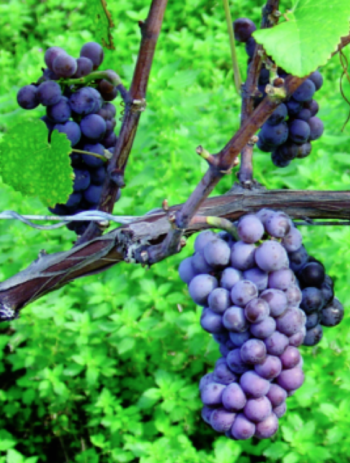 Do your grapes look ripe; they are full of color and have reached the size you expect from the varietal. But before harvesting, a number of factors must be considered to determine if they are truly ready for harvesting: Brix, titratable acidity (TA), pH, phenolic ripeness and flavor development.
Do your grapes look ripe; they are full of color and have reached the size you expect from the varietal. But before harvesting, a number of factors must be considered to determine if they are truly ready for harvesting: Brix, titratable acidity (TA), pH, phenolic ripeness and flavor development.
The latter two factors are determined by taste, and may vary from one person’s palate to another’s, so let’s focus on the first three and the tests that can be performed to determine each. Start by picking grapes at random from the middle of clusters from different vines of the same variety to be your test subjects. Avoid vines or grapes that appear damaged or are at the end of a row.
The perfect red grape will have a reading around 22–25 °Brix, 0.6–0.8% tritrable acidity (TA) and a pH of 3.2–3.6. However, few things in this world are perfect and grapes often are not one of them.
Let’s start with Brix, which is the percent of sugar in the grape juice. Brix will determine the potential alcohol content grapes possess if fermented to dryness. Because a sugar solution like grape juice has a higher specific gravity than water, Brix can be measured with a hydrometer. The specific gravity of water is 1.000. The higher the Brix content in grape juice the higher the resulting specific gravity will be.
In his book, From Vines to Wines, Jeff Cox states that averaging the specific gravities of two separate 100-berry samples, each crushed, sieved and measured with a hydrometer, will result in an accuracy of plus or minus 1 °Brix, while five 100-berry samples will give an accuracy within ½ °Brix.
Brix can also be measured with a refractometer, which measures the sugar content by how much light is refracted through the juice. The advantage of a refractometer is that it can be taken into the vineyard to determine Brix immediately by squeezing a drop of grape juice onto it; of course many grapes from across the vineyard must be tested to get a feel for the entire crop.
Titratable acidity (TA) is the total amount of acid in the grape juice expressed as the tartaric acid content. Acids give crispness, tart and thirst-quenching qualities to wine and help with balance. Most of the acid in grapes is tartaric (and possibly high malic acid in some varietals grown in cool-climates). Tartaric acid has a strong, sour taste and has the biggest impact on taste. The optimum range of acids for reds is 0.60-0.80% and for whites is 0.65-0.85%.
If TA is too low your wine will have a flat, flabby taste, and also be more susceptible to bacteria, while grapes with too high a TA will have a sour taste. Most winemaking supply stores sell TA test kits, or, if you live within the vicinity of a wine laboratory, they will also give you these readings for a price.
The final factor to look for is pH, which is somewhat related to TA, however there is not always a correlation. While TA measures the acid concentration, pH measures the relative strength of those acids. The optimum pH for reds is 3.2–3.6 and 3.0–3.3 for whites. A low pH wine will taste tart, while high pH — often caused by overripe grapes or soil with too much potassium in it — will taste flat and lack freshness. High pH can also lead to bacterial growth and spoilage in your wine — not good! A pH meter is needed to get an accurate reading. Retailers sell pH test kits, however they are not intended to accurately give readings within a 0.1 margin, which is necessary for winemakers.
In addition to looking at ideal readings for each factor, UC-Davis researchers have determined a ratio of Brix:TA from 30:1 to 35:1 lead to the most balanced wines. But keep an eye on all three numbers, because sometimes waiting in one area causes diminishing returns in another area.






